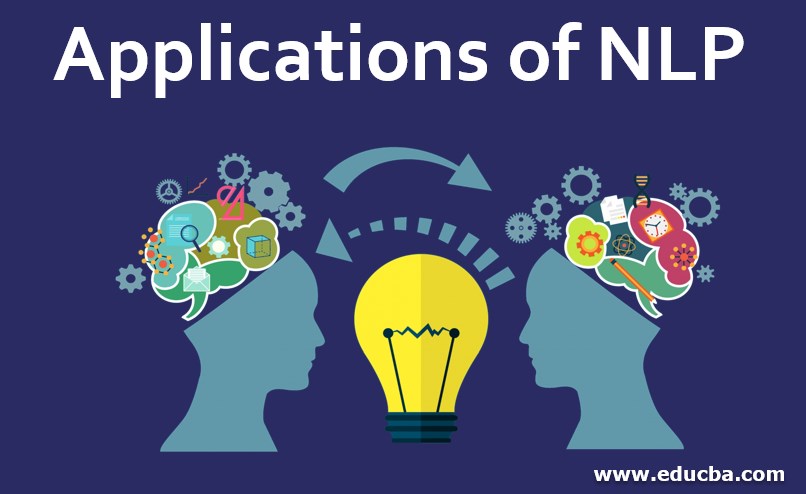Top 5 Natural Language Processing (NLP) Applications in AI
The popularity of artificial intelligence and its various Natural Language Processing branches is soaring daily. With the advancement in machine learning (ML), deep learning (DL), and natural language processing (NLP), artificial intelligence applications are progressing exponentially in research and business. We all know that language plays an influential role in developing robots and machines that can understand human interactions and communications. In computer science and AI, the NLP is responsible for making systems understand human linguistics in digital form. This blog will cater to the top 5 NLP applications prevalent in the market.
What is Natural Language Processing (NLP)?
Natural Language Processing (NLP) automatically parses human language through speech and text recognition. Through NLP, machines can interpret human language figuratively through speech and text recognition. Modern research will evaluate voice intensity to make computer systems/apps understand mood and sense what a human is trying to convey. Recent applications include voice assistance in smartphones, smart home devices, digital language translators, text analytics, etc.
Top 5 Applications of Natural Language Processing (NLP)
Let us now take a look at the top 5 applications of NLP and AI that are helping businesses and software development companies.
- 1) Smart chatbots: Chatbots have become a part of most businesses. These NLP applications simulate textual human conversations or make conversation through voice interactions. Most business-to-business (B2B) and business-to-consumer (B2C) organizations are increasingly using chatbots & intelligent chatbot applications for virtual assistance. Having a chatbot with the business system reduces overhead costs and acts like user support staff to better assist even when it is not a working hour. Through smart chatbots, organizations can provide 24×7 customer support at a minimum cost. Such applications use NLP and machine learning models to make the app understand what the customer is trying to convey. Well-known companies like Amazon, Flipkart, Uber, Zomato, etc., use intelligent chatbots to assist and support customer queries 24×7.
- 2) Speech recognition apps: Are you wondering how Google Assistant and Smart Home devices like Siri and Alexa can recognize your voice and start listening to your commands? Well, this is because of Natural Language Processing (NLP). NLP helps in enabling speech recognition by converting voice-based input to machine-readable data. Popular search engines and intelligent voice assistants use NLP and AI algorithms to parse what users want to say. These speech recognition applications can also distinguish the voice of each individual. Such programs can also help users eliminate the typing of entire commands.
- 3) Email Filtering through Text Classification: A hassle-free email service is what every professional want. Differentiating between useful and junk emails plays a significant role in enhancing productivity because every professional uses emails to communicate with each other. Almost all email service providers render text classification features to classify and categorize emails for better productivity. Gmail organizes emails into primary, social, and promotional sections. Also, all spammed emails hoard in a separate folder so that they do not flood the inbox section with unnecessary emails. Such segregation works based on text classification done using Natural Language Processing (NLP). This NLP technique understands what each email subject and body is trying to convey. Based on that, it classifies their actions as per the category. Because of this segregation, users/professionals can easily navigate through different sections as required, saving their time.
- 4) Sentiment Analysis applications: Often, human speech or text becomes intricate to interpret as they involve sentiments, emotions, expressions, sarcasm, and feelings with metaphor. Sometimes these expressions (speech and text) go beyond the literal meaning, and that makes it inflexible for a machine to recognize what the user wants to convey. For making the machine understand human emotions (whether text or speech) through AI algorithms, sentiment analyzers are becoming popular. It uses Natural Language Understanding (NLU), a sub-domain of Natural Language Processing (NLP), which makes the machine understand different sentiments and their non-literal meaning. Grammarly is a popular application that uses the Sentiment Analysis algorithm to understand the delivery and engagement of texts. Sentiment analysis applications also help customer support programs understand customer reactions and emotions. It also helps in handling social media disrupts and sentimental posts. Various third-party companies provide sentiment analysis APIs for social media monitoring, customer experience management, understanding customer insights, etc.
- 5) Machine translation programs: With the advent of social media, people across the globe have come closer to each other by overcoming various challenges like the language barrier. Researchers and developers of these social media apps use machine translation programs that use NLP and help social media apps eliminate language barriers. The birth of powerful processors and domains like Machine Learning (ML) and Artificial Neural Networks (ANN) help this field grow. Machine translation also helps businesses grab foreign customers who do trading or business overseas. Instagram and Facebook use their translation software that uses Natural Language Processing, Neural Networks, and other disciplines of AI. Google has a language translator that also works with its search engine.
Natural Language Processing (NLP) also helps in automatic text summarization, social media analytics, auto prediction & correction, market intelligence, etc. Various libraries and packages are also evolving on different programming languages that can help create NLP projects. Python provides libraries like Natural Language Toolkit (NLTK) & various other open-source libraries that enable NLP programming for developing such projects.
We hope this article has given you a crisp idea of the various applications and areas where NLP is flourishing. As the technologies advance rapidly, it helps in the emergence of new sub-domains of NLP like Natural Language Understanding (NLU), Machine Translation, Semantic analysis, etc. All these techniques help create the entire Natural Language Processing (NLP) domain and Artificial Intelligence (AI) to make machines understand what the user wants to convey. Often it becomes time-consuming when dealing with converting written text or speech into a machine-understandable format for a large set of communication. NLP can also help reduce that hurdle.


